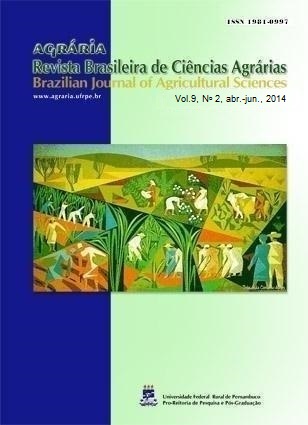Nutrient accumulation and decomposition of straw of Brachiaria in function of different cutting management and production of corn in succession
DOI:
https://doi.org/10.5039/agraria.v9i2a3380Keywords:
straw management, no-tillage system, Urochloa brizantha, Urochloa ruziziensis, Zea maysAbstract
One of the premises of the no-tillage system is the maintenance of straw on the soil surface. However, the particle size by different cutting implements used for straw formation can influence its rate of decomposition. Therefore, the objective of this study was to evaluate in a Red Latosol (Oxisol) under irrigation in the “Cerrado” conditions, the influence of different straw management methods of Urochloa forage over accumulation of nutrients, straw decomposition rates, development of the subsequent maze crop and soil chemical attributes of soil fertility. The experiment was installed in randomized block design with 4 replications in a factorial arrangement 2 x 4, two forages species (Urochloa brizantha cv. Xaraés and Urochloa ruziziensis), and four different cutting management (mowing, horizontal grinding, knife-rolling and whole-plant), after plants chemical desiccation. It was found that U. ruziziensis provides greater accumulation and reminiscent nutrients, mainly N and K during the period of 180 days, besides, promoting faster decomposition and nutrients release compared to U. brizantha, as well as the plants management under chemical desiccation using a horizontal grinder compared to the others. Both the cultivation of forage species and the different straw management systems did not interfere on grain productivity of the subsequent corn crop neither altered chemical attributes of soil.
Downloads
Downloads
Published
How to Cite
Issue
Section
License

This work is licensed under a Creative Commons Attribution-NonCommercial 3.0 Unported License.


